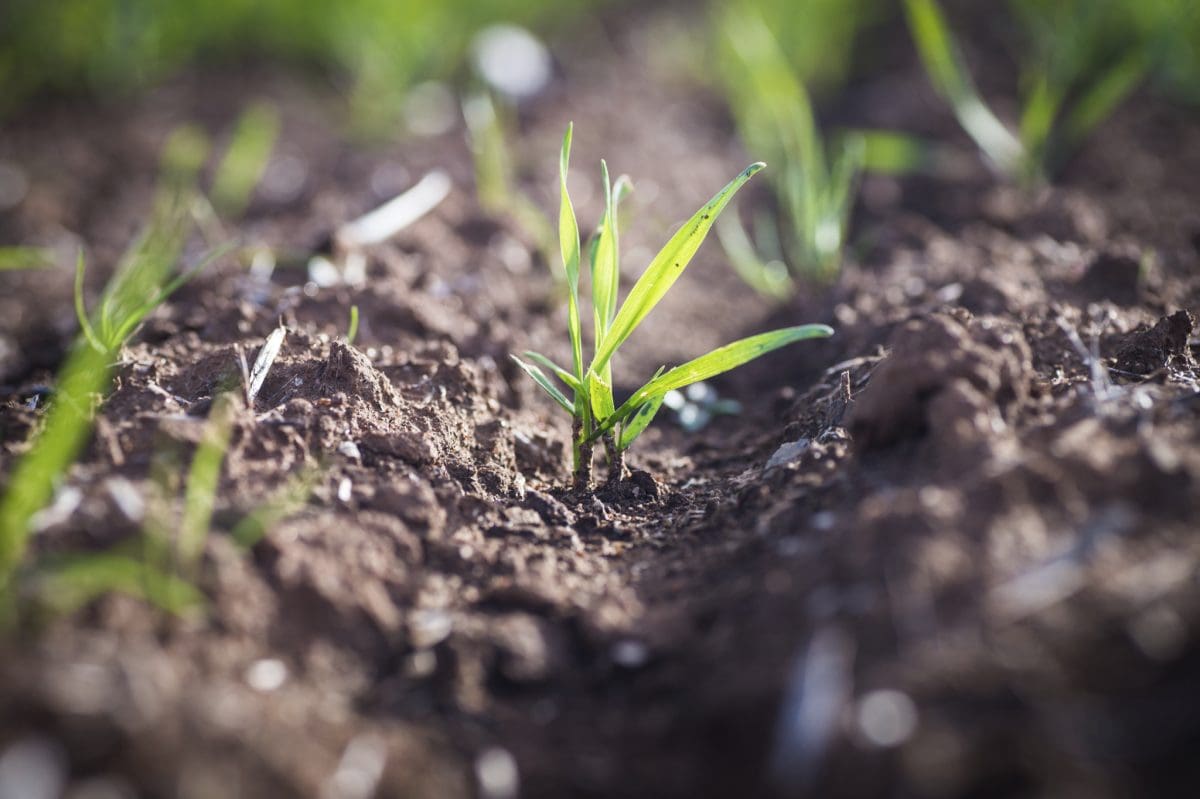
Long-coleoptile wheat is suited to deeper sowing. Photo: Evan Collis/GRDC
THE Grains Research and Development Corporation has announced a $12.7 million national research project to support the integration of long-coleoptile wheat into Australian farming systems.
The announcement was made by GRDC chair John Woods today at the Grains Research Update in Perth, Western Australia’s premier grains industry forum.
The four-year project will be led by Australia’s national science agency CSIRO.
Organisations also involved in the project include: University of Melbourne; NSW Department of Primary Industries; Queensland Department of Agriculture and Forestry; SLR Agriculture; the WA Department of Primary Industries and Regional Development; the University of South Australia, and EPAG Research.
The coleoptile is the protective sheath which encloses the emerging shoot and first leaves, and the longer the coleoptile, the greater the emergence potential when deep sowing.
Long-coleoptile wheats can be sown at depths of more than 10cm, making better use of stored soil moisture.
Mr Woods said long-coleoptile wheat could be a “game changer” for growers in zones with low-to-medium rainfall, extending options for early sowing to meet the challenges of increasing enterprise sizes and changing climates.
“This project builds on decades of research by CSIRO and previous GRDC investment of approximately $11.5M to introduce new climate-adaptive traits into commercial wheat varieties,” Mr Woods said.
“The significant work to date by Dr Greg Rebetzke and his team at CSIRO has focused on identifying and sourcing new genes from across the world, and then assessing them in Australia under both laboratory and field conditions.
“This project addresses identified knowledge gaps around how these genetics perform across contrasting production environments, soils and farming systems, equipping growers with the tools to better respond to changing climates and seasonal variability in their farming systems.
National trials will explore a range of genetic, environmental and management factors relating to long coleoptile wheat implementation.
The project will also include the development of a common industry standard for measuring and defining the categories for wheat coleoptile length.
Lead researcher and CSIRO plant geneticist Dr Greg Rebetzke said the project was working to mitigate sowing risks for growers and provide greater flexibility around time of sowing.
“Climatic modelling work using on-farm field and usage trials suggests a 20 per cent increase in yields from long coleoptile varieties,” Dr Rebetzke said.
“That’s because sowing varieties that have the right fit for a farming system ensures crop growth coincides with climatic conditions to which the crop is best suited.
“For example, ensuring germination and seedling growth occurs at planting so that varieties flower at the optimal time for which they are bred and avoid those very hot, very dry conditions at the end of the season.”
Dr Rebetzke said that with increasing climate variability, particularly rainfall variability, taking advantage of summer rainfall with early sowing would better optimise water productivity.
“With today’s changing climates, ensuring you’ve adequate moisture for germination in those top five centimetres of soil is increasingly risky for growers. Long coleoptile varieties should make this less of an issue into the future,” Dr Rebetzke said.
“The goal here is more ‘crop for drop’ in sowing and getting the crop away at the right time of year, rather than risking delayed germination and delayed emergence.
“New long coleoptile wheat varieties are being developed and are close to commercial release. This project will create the supporting agronomic packages so growers can optimise their performance.”
Grower interest in long coleoptile or “moisture-seeking” wheat is strong, particularly in WA, where growers have been involved in trials over the past three years to inform future agronomic and farming systems guidelines.
Southern Cross grower Callum Wesley instigated a long-coleoptile wheat trial on his farm in 2020, in collaboration with Dr Rebetzke, after receiving 150mm of rain in February but no follow-up rain until late May.
Mr Wesley faced persistent changes in rainfall patterns that drenched his paddocks over summer but left the topsoil dry by sowing time.
The new rainfall pattern had made it difficult to get a decent sowing opportunity for the previous three seasons.
“Seeding early using these long-coleoptile varieties increased Mr Wesley’s water productivity by around 25 percent, which is remarkable in what was a decile one rainfall year.
“It was one of the driest years on record and yet Callum yielded 1.3 tonnes, whereas the standard wheat varieties germinating later were producing significantly less yield,” Dr Rebetzke said.
“And it’s largely because Callum sowed early, and the early emerging crop could make use of that deep moisture and mature ahead of the hot November-December months.”
Mr Wesley’s advocacy, and similar interest from other growers across WA, is credited for kick-starting further investment into agronomic and farming systems guidelines for long-coleoptile wheat, and in 2021 and 2022 GRDC invested in on-farm trials in the northern and western regions.
Led by SLR Agriculture in the west and QDAF in the north, the trials included CSIRO’s breeding lines and long-coleoptile wheat lines from commercial breeding companies, which were released for commercial sale for the first time in 2022.
GRDC manager sustainable cropping systems west, Rowan Maddern, said the $12.7M project would build on previous work undertaken at national and regional levels to deliver a complete agronomic package to growers.
“To fully exploit the genetic potential of long-coleoptile wheat we need to understand the relationship between genetic, environmental and management factors and optimise that,” Dr Maddern said.
“This project pulls all variables together for seeding depth to give growers an agronomic package that they can pull off the shelf and apply when needed.
“It will involve significant consultation with industry including fertiliser and chemical companies and commercial breeders. The driving focus of this investment is to build on current work and collaborate with industry as a whole to benefit grain growers.”
The GRDC project Integrating long coleoptile wheat into Australian farming systems through an integrated understanding of genetics, management and environment is expected to be completed by the middle of 2026.
Source: GRDC

HAVE YOUR SAY